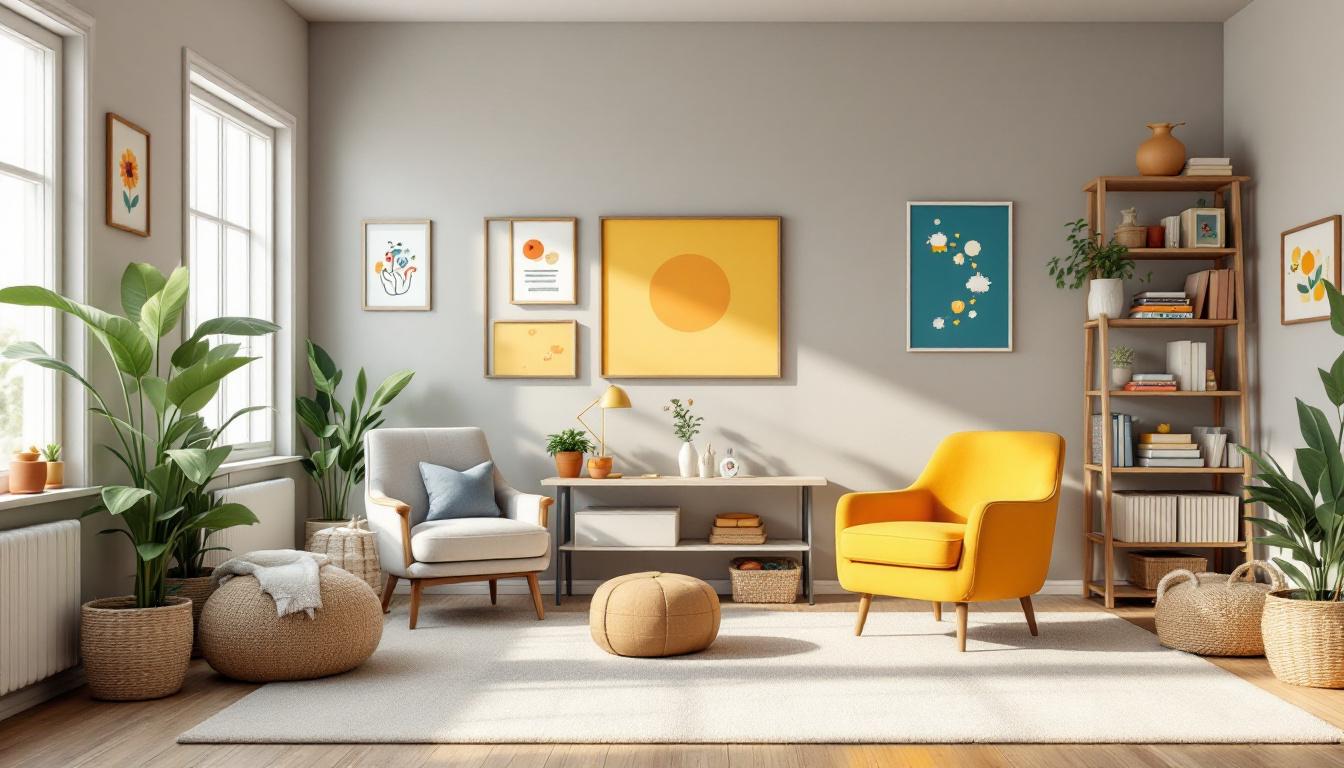Establishing a Strong Foundation with Home-Based ABA Therapy
Creating an effective ABA routine at home is paramount for supporting children with autism. It involves careful planning, consistency, and collaboration with professionals to foster skill development, reduce anxiety, and enhance overall well-being. This article explores key strategies, tools, and considerations for designing personalized routines that maximize therapy outcomes and integrate seamlessly into daily life.
Designing a Personalized ABA Routine Step-by-Step
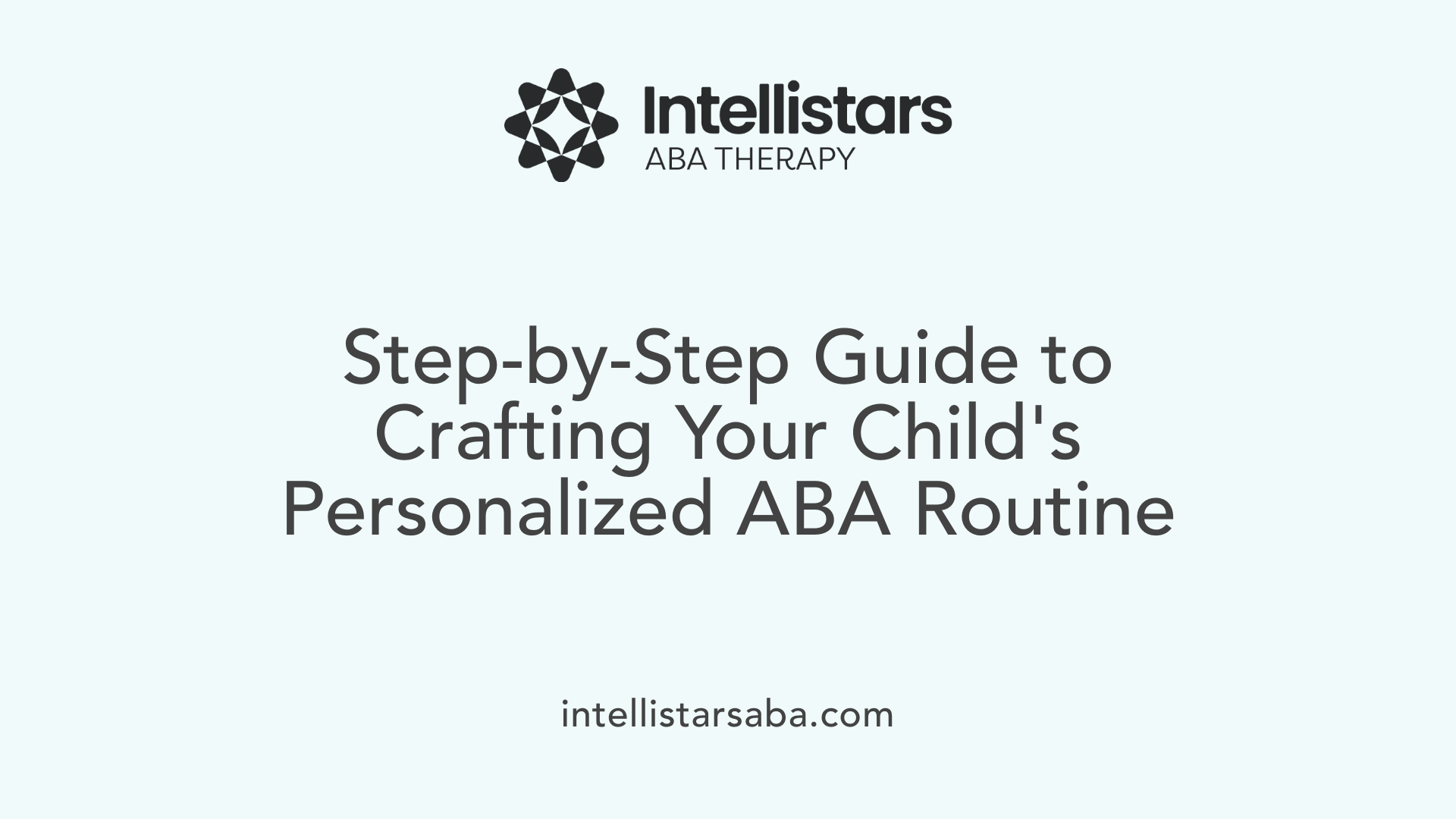
How do you structure an ABA session?
A typical ABA session is tailored to meet each child's unique needs, starting with establishing trust and rapport through gentle observation and play. In the beginning, parents should prepare by explaining the process to their child, bringing comfort items to ease any anxieties, and arriving early to ensure a calm, unhurried start.
The session itself usually involves engaging the child with play-based activities that respect their pace and avoid pushing for immediate compliance. The therapist reviews previous data and goals, then applies specific behavior intervention strategies suited to the child's needs. Reinforcement techniques are used consistently to motivate learning.
Throughout the session, data collection is prioritized, with observations allowing real-time adjustments to strategies. Caregivers play an active role in reinforcing skills at home, understanding that the process involves ongoing support and collaboration.
How can I implement ABA therapy at home effectively?
Implementing ABA at home requires understanding its core principles and tailoring strategies accordingly. Start with educating yourself about ABA techniques, then observe your child's behavior to identify triggers and preferred reinforcers.
Establish consistent routines that provide stability and predictability, which help your child feel secure and focused. Use positive reinforcement—such as praise, preferred toys, or activities—to motivate and reinforce desirable behaviors.
Collaborating with a qualified ABA professional, like a BCBA, is crucial. They can help create a personalized plan and give guidance on implementing strategies at home. Seek external resources such as books, online courses, and community support groups to enhance your understanding and skills.
Regularly monitor your child's progress through data collection and adapt strategies as needed. Maintaining patience and flexibility will foster a supportive environment where your child can thrive.
What are the benefits of in-home ABA therapy?
In-home ABA therapy offers several advantages. The familiar environment reduces anxiety and increases engagement, making it easier for your child to participate actively.
It supports the generalization of skills across different settings, as it brings interventions into everyday life. This naturalistic approach encourages children to practice skills in the context they will use them.
Active caregiver involvement is a core element, as training parents and family members ensures consistency and reinforces learning between sessions. Customization based on your child's interests and needs allows for a more motivating and relevant experience.
Overall, in-home ABA provides a flexible, accessible, and individualized framework that promotes steady growth in communication, social skills, and behavior management.
Are there resources or materials available for ABA therapy at home?
Yes, there are many resources suitable for home-based ABA implementation. Printable materials like visual schedules, behavior charts, and activity worksheets help facilitate routines and track progress.
Books and guides from ABA experts offer strategies tailored for parents, covering topics from designing routines to managing transitions and sensory needs.
Many organizations and online platforms provide tutorials, videos, and training modules that can equip caregivers with practical skills. Additionally, digital tools such as scheduling apps and timers help organize sessions and ensure consistency.
Working closely with a BCBA is highly recommended; they can customize these resources to suit your child's specific requirements while ensuring ethical and effective practices.
Summarized Resources and Future Support
| Resource Type | Description | Benefits |
|---|---|---|
| Printable Activities | Visual schedules, behavior charts | Easy application, visual clarity |
| Expert Guidelines | ABA books and manuals | Evidence-based strategies |
| Online Courses | Training modules and tutorials | Accessible, flexible learning |
| Digital Tools | Scheduling apps, timers, AAC | Organization, engagement |
Staying connected with professionals and utilizing these tools enhances your ability to sustain an effective and encouraging ABA routine at home. Consistent use of visual supports, reinforcement, and family participation creates a stable environment fostering your child's development.
Core Principles That Underpin Effective ABA Routines
How do you structure an ABA session?
A typical ABA session is designed to meet the child's unique needs, starting with observation and rapport-building during initial visits. This creates a safe environment where the child feels comfortable. Parents play a vital role by preparing the child—explaining what to expect, bringing familiar items, and arriving early. During the session, therapists engage the child with play-based activities, respecting their pace and avoiding pressure for immediate compliance.
Sessions usually involve reviewing previous progress, setting goals, and implementing individualized strategies. Reinforcement, such as praise or preferred activities, encourages desired behaviors and motivates learning. Data collection happens in real-time, helping therapists adjust interventions promptly. Caregiver involvement is continuous, reinforcing skills at home and ensuring consistency.
Overall, a structured ABA session balances engagement, data tracking, and flexibility to support meaningful progress.
Integrating ABA Principles Into Daily Routines for Success
How do you structure an ABA session?
A typical ABA session is personalized to meet the child's specific needs. It usually begins with gentle observation and rapport-building during initial visits, creating a sense of safety and trust. Parents can help prepare by explaining the process to their child, bringing comfort items, and arriving early to ensure a smooth start.
During the session, therapists engage children through play-based activities, respecting their individual pace and avoiding pressure for immediate compliance. Sessions often include reviewing previous data and goals, implementing tailored behavior strategies, and using reinforcement techniques to encourage participation and learning.
Throughout therapy, data collection and real-time adjustments are vital to optimize progress. Ongoing involvement from caregivers supports the reinforcement of skills learned during the sessions at home. This collaborative approach ensures that therapy remains flexible, effective, and aligned with the child's evolving needs.
How can I incorporate ABA principles into everyday routines?
Embedding ABA principles into daily routines involves seizing natural teaching moments during activities like mealtime, play, grooming, and transitions. Behavior chaining is a technique that breaks down complex skills into manageable steps, making learning more accessible.
Natural environment teaching (NET) encourages children to learn in various settings, helping skills generalize beyond therapy sessions. Practicing social skills, such as turn-taking or greeting others, can be seamlessly integrated through structured play or scripted interactions.
Building independence is also crucial. Children are encouraged to complete self-care tasks, follow routines, and make choices, which fosters confidence and autonomy. Consistency, patience, and reinforcement across different settings solidify these skills and promote their transfer into everyday life.
What strategies can enhance behavior generalization at home?
To facilitate the transfer of learned behaviors, it is vital to use multiple settings, contexts, and people—varying therapists, family members, and materials. This diversity prevents skills from remaining context-specific and enhances their durability.
Incorporating a variety of examples and materials that align with the child's interests can boost engagement and motivation. Consistent prompts, reinforcement, and routine use of cues help bridge the gap between therapy and natural environments.
Teaching children self-management and self-monitoring skills encourages independence and ongoing skill practice. Regular review and adjustment of activities ensure continuous development.
Engaging family members in training and coaching helps to create a consistent reinforcement system across daily routines, supporting the generalization process.
How can routines support the development of social skills?
Routines set predictable contexts ideal for practicing social interactions like greetings, sharing, turn-taking, and eye contact—all foundational social skills.
By integrating these opportunities into daily activities such as family meals or playtime, children can learn and practice social behaviors in natural settings. Repetitive and consistent practice within routines helps reinforce social expectations, boost confidence, and improve interaction skills.
Visual supports, social scripts, and structured routines can reduce social anxiety and provide clear guidance, making social exchanges more manageable and less overwhelming. Over time, these consistent experiences help children develop appropriate social responses and relationships.
Creating a Visual and Physical Environment Conducive to Learning
How do you organize your home environment to support ABA routines?
Creating an organized and inviting home environment is fundamental for successful ABA therapy. It starts with dedicating specific areas for therapy and daily activities, which helps children recognize routines and feel more secure. These designated spaces should be free from clutter to minimize distractions. Incorporate visual supports like picture schedules, visual timers, and activity charts to guide the child through their day.
Sensory-friendly elements are also vital. Use calming lighting, soft furnishings, and sensory toys to prevent sensory overload and promote relaxation. Keep all therapy materials—visual cues, preferred toys, reinforcement items—in clearly labeled boxes or shelves that are easily accessible. This organization not only streamlines sessions but also encourages independence.
Using timers can assist with smooth transitions between activities and help maintain a predictable routine. By reducing chaos and providing a calm, structured environment, children can focus better, participate actively, and build skills more effectively.
How do you structure an ABA session?
An ABA session is tailored to meet each child's unique needs, beginning with rapport building and gentle observation. Early sessions focus on creating a safe environment where the child feels comfortable. It’s helpful for parents to explain the process to their child beforehand, bring comfort items, and arrive early.
During the session, the therapist engages the child with play-based activities suited to their interests and developmental level. Respecting the child's pace and avoiding pressure ensures engagement. Each session involves reviewing previous progress, setting or adjusting goals, and implementing specific behavior strategies.
Reinforcement is used throughout to motivate learning and positive behavior. Data collection is continuous, allowing for real-time adjustments, ensuring the therapy stays on track. Caregivers are actively involved, reinforcing skills at home, which amplifies progress.
How can I organize my home environment to support ABA routines?
Effective organization of your home supports seamless integration of ABA routines into everyday life. Designate specific zones for different activities—learning, play, relaxation—with clear visual cues to signal transitions.
Maintain sensory-friendly features like calming lighting, noise control via soft furnishings or noise-canceling headphones, and designated calm spaces stocked with sensory tools. Keep visual supports, reinforcement items, and preferred toys in neat, accessible containers or drawers.
Timers help facilitate smooth transition between activities, reducing stress and confusion. Keeping the environment clutter-free allows the child to focus better and participate more willingly.
What strategies support sensory regulation during ABA activities?
Creating a sensory-friendly environment is crucial to help children regulate emotions and sensory input. Use low lighting, soundproofing, and calming scents where appropriate.
Implement personalized sensory diets that include activities like heavy work, calming exercises, and sensory breaks to help children remain focused.
Teaching self-regulation techniques, such as deep breathing, using visual supports to cue calming strategies, and modeling calm behavior, encourages independence.
Gradually introducing children to sensory stimuli—desensitization—can lessen sensitivities over time. Providing a sensory toolbox with fidget toys, textured items, or chewables empowers children to self-soothe and self-manage overload.
How does organizing therapy materials improve session effectiveness?
A well-organized therapy space makes sessions smoother and more productive. Grouping visual supports, preferred toys, reinforcement tokens, and activity sheets in labeled containers allows quick access, minimizing downtime.
Maintaining a consistent layout reduces to distractions and preempts frustration, keeping children engaged. Visual timers or behavior charts displayed prominently clarify expectations and progress.
Clear organization creates a predictable environment, fostering a sense of security. As a result, children are more attentive, participate actively, and make meaningful progress.
| Topic | Details | Benefits |
|---|---|---|
| Therapy Area Setup | Dedicated, clutter-free space with sensory elements | Safety, focus, comfort |
| Visual Supports | Picture schedules, timers, activity charts | Clarity, routine adherence |
| Sensory-Friendly Features | Soft lighting, calming tools, noise reduction | Reduced overwhelm, emotional regulation |
| Material Storage | Labeled, accessible bins and shelves | Ease of use, independence |
| Use of Timers | Transition timers, visual countdowns | Smooth shifts, reduced anxiety |
By thoughtfully designing your home environment with these principles, you create a foundation for successful ABA therapy. It promotes consistency, supports sensory needs, and enhances engagement—ultimately facilitating meaningful learning and development for your child.
Monitoring Progress and Making Data-Driven Adjustments
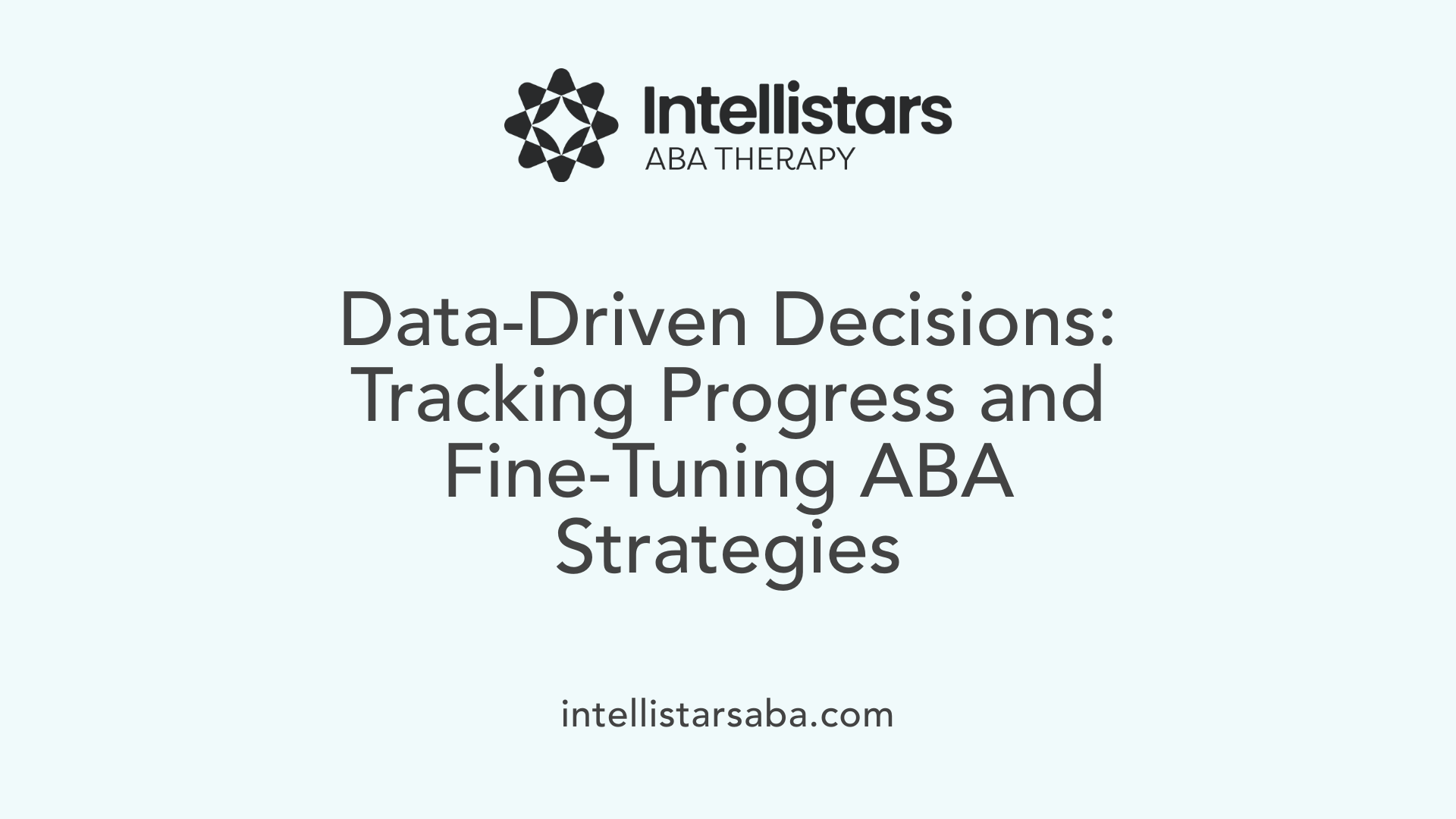
How do you structure an ABA session?
A typical ABA session is carefully planned around the child's individual needs. It often begins with a gentle phase of observation and building rapport, especially during initial visits, to foster trust and create a sense of safety.
Parents are encouraged to prepare for sessions by explaining them to their child, bringing comfort items, and arriving early. This preparation helps minimize stress and set the stage for productive learning.
During the session, the therapist uses play-based activities tailored to the child's interests. They respect the child's pace, avoiding any pressure for immediate compliance. The session usually includes reviewing previous data and goals, implementing specific behavior strategies, and employing reinforcement techniques to motivate the child.
Throughout the session, real-time data collection and adjustments are made to optimize progress. Caregivers play a vital role in reinforcing skills learned during therapy at home, ensuring consistency and reinforcing new behaviors.
How do you monitor and evaluate a child's progress in ABA?
Monitoring progress involves systematically collecting data on targeted behaviors and skills using various tools like charts, logs, and digital applications. Regular review of this data helps identify trends and assess how well interventions are working.
Collaborating closely with ABA therapists during scheduled reviews ensures that decisions regarding routines, reinforcement strategies, and skill targets are based on concrete evidence. Observations during therapy and everyday activities provide additional qualitative insights.
Adjustments are made by analyzing this data, which allows therapists and caregivers to refine goals, modify routines, or reinforce certain behaviors to foster continued development.
What tools and strategies are effective for data collection in home ABA?
Effective data collection employs digital apps, spreadsheets, and printable logs that enable real-time recording of behaviors, task completion, and reinforcement use. Visual aids like charts and progress trackers make trends visible and motivate continued effort.
Consistency is critical. Using standardized measurement protocols—such as timestamping events or noting antecedents and consequences—ensures reliable data.
Strategic collaboration with professionals helps maintain aligned methods across settings, enhancing the accuracy and usefulness of the data gathered. Clear documentation supports ongoing assessment and informs necessary adjustments to routines or interventions.
How can caregivers collaborate with professionals to optimize ABA routines?
Effective teamwork between caregivers and professionals involves maintaining open, regular communication and sharing detailed progress notes. Participating in routine reviews with ABA therapists allows caregivers to provide firsthand feedback about what strategies work or need tweaking.
Engaging in parent training sessions enhances caregivers' understanding of ABA techniques and proper implementation, which boosts consistency.
Utilizing telehealth consultations and detailed progress reports ensures ongoing support and guidance. Asking experts for advice on data collection, activity modifications, and behavioral strategies helps tailor routines that are both effective and manageable.
This collaborative approach ensures routines remain flexible yet consistent, providing a stable environment where children can thrive and continually develop new skills.
Involving Families and Caregivers for Stronger Outcomes
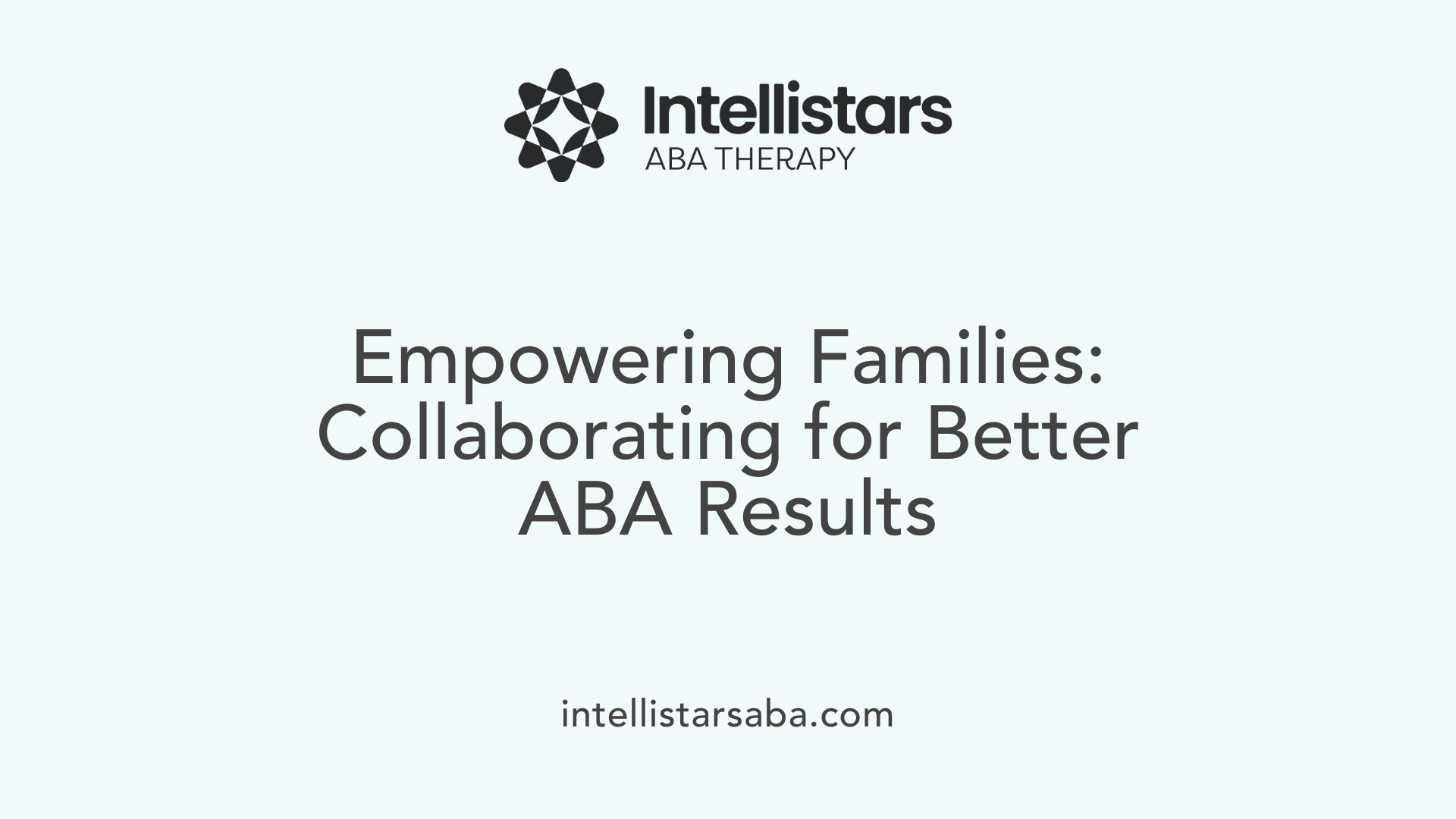
How do you structure an ABA session?
A typical ABA session is highly personalized to fit the child's unique needs and interests. It often begins with gentle activities designed to establish safety and trust, especially during initial visits where building rapport is crucial. Parents can help prepare by explaining the session process to their child, bringing comfort objects, and arriving early to ensure a calm start.
During the session, therapists use play-based activities and respect the child's pacing, avoiding pressure for immediate compliance. They review previous data, set targets, and implement tailored behavior strategies while providing reinforcement to motivate learning. Data collection is ongoing to monitor progress, and real-time adjustments are made as needed.
Caregiver involvement is essential during sessions to reinforce skills at home. Open communication and ongoing support from the therapy team help optimize each session, ensuring the principles of ABA are effectively applied and translated into everyday routines.
Balancing Routine Consistency and Flexibility for Optimal Success
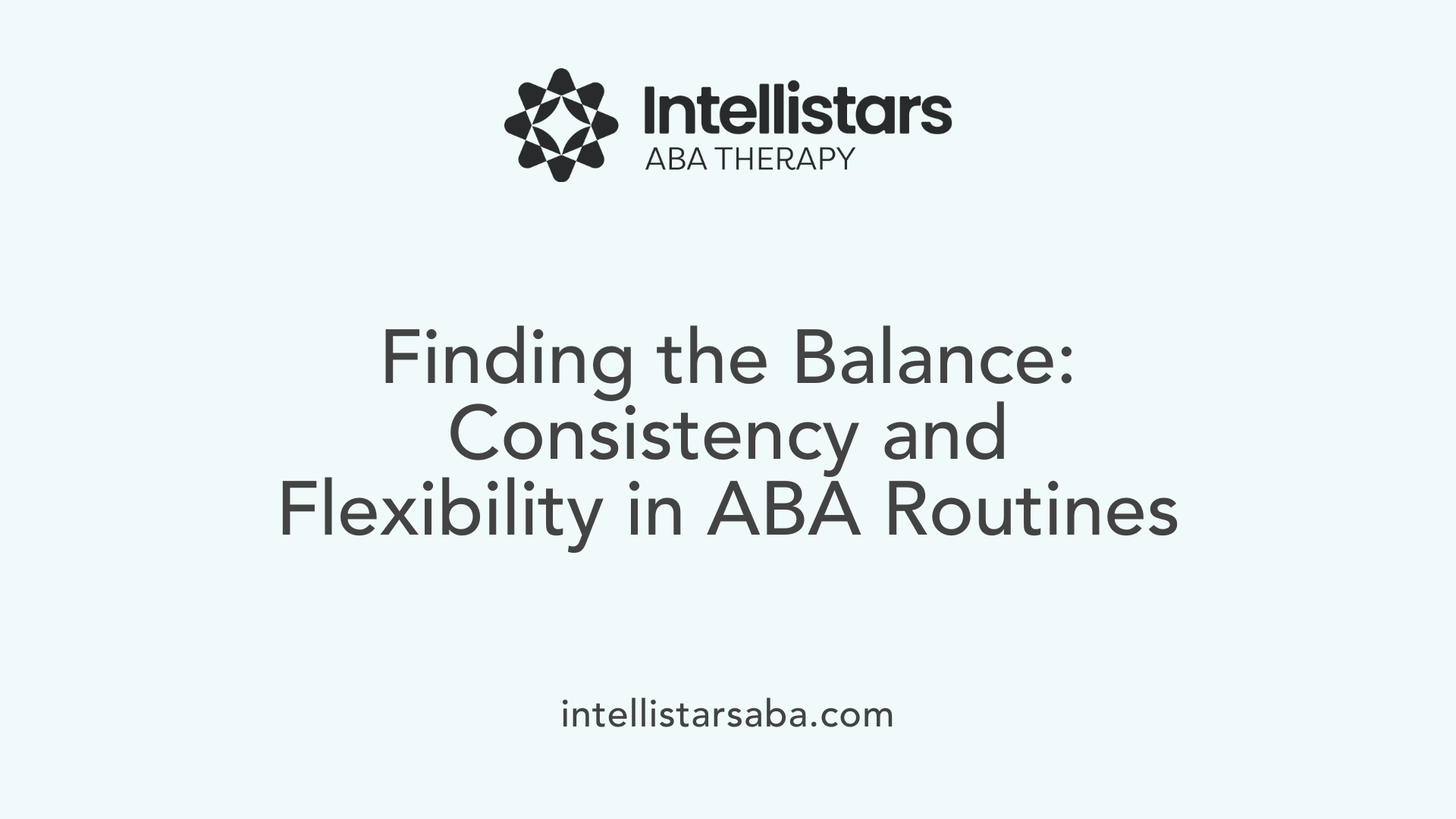
How do you structure an ABA session?
A well-organized ABA session is tailored to meet each child's specific needs, establishing a foundation of safety, trust, and predictability. Initial visits focus on gentle observations and rapport-building. Caregivers are encouraged to prepare by explaining the process to the child and bringing comfort items to ease anxiety. Punctuality is important to start on time and set the tone.
During the session, therapists engage the child through play-based activities, respecting their pace and avoiding pressure for immediate compliance. The session typically includes reviewing previous data, setting new goals, and implementing behavior intervention strategies with positive reinforcement. Data collection occurs continuously to monitor progress and inform adjustments.
Caregiver involvement is vital; they participate in real-time reinforcement and observe techniques to practice at home. This collaborative approach ensures consistency and maximizes progress, creating a supportive environment tailored to the child's unique profile.
Innovative Tools and Technologies to Support Home ABA Routines
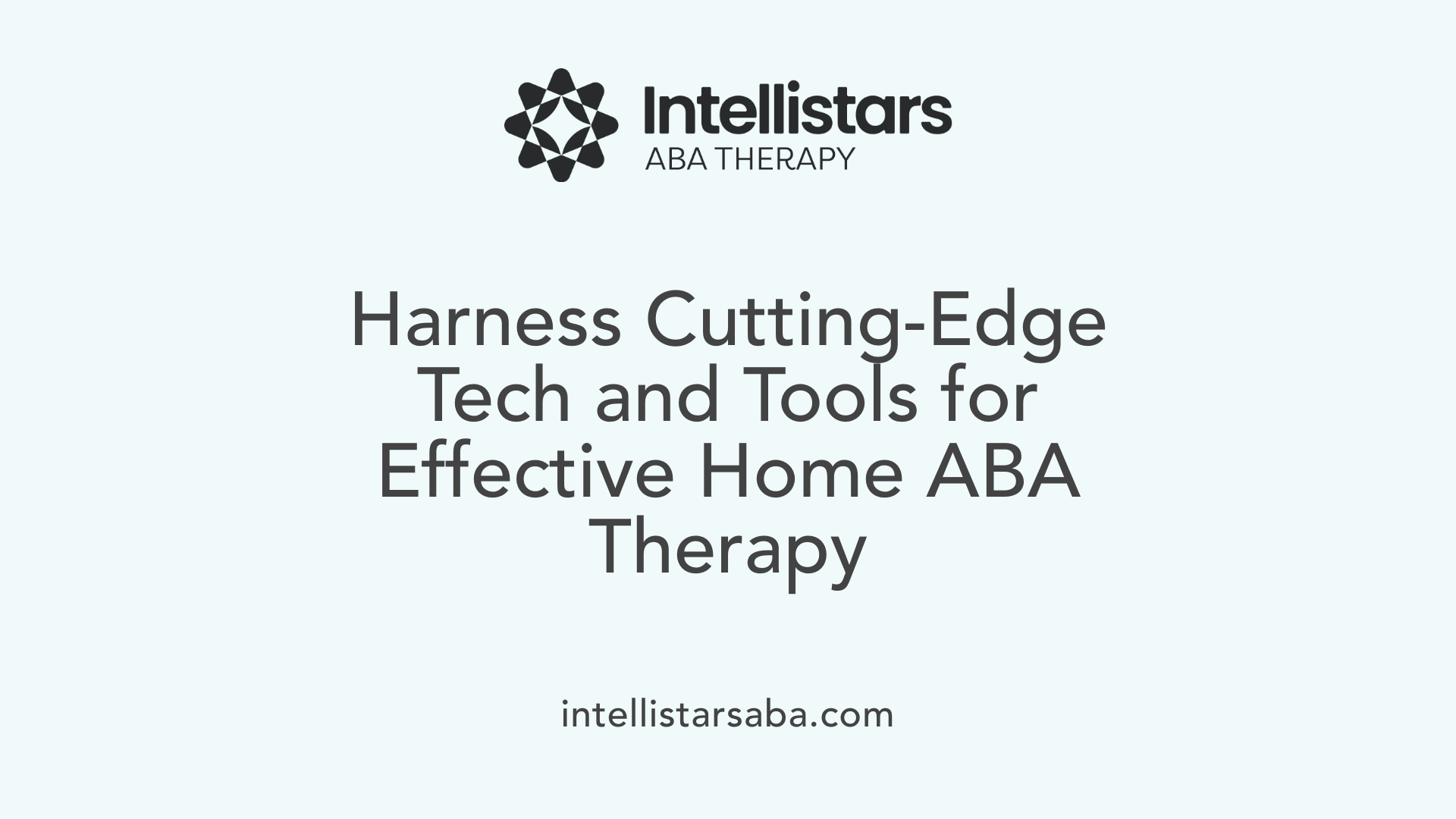
How do you structure an ABA session?
A well-organized ABA session is tailored to fit the child's unique needs. The process often begins with gentle observation and building rapport to ensure the child feels safe and trusts the therapist. Families can help by preparing with a clear explanation of what to expect, bringing comfort items, and arriving early.
During the session, the therapist engages the child using play-based activities. It's important to respect the child's pace and avoid pressuring them for immediate compliance. The session includes reviewing previous data, setting clear goals, and applying specific behavior strategies. Reinforcement is used effectively to encourage desired behaviors.
Throughout the session, data is collected to monitor progress, and therapists make real-time adjustments to optimize results. Family involvement is crucial, as caregivers reinforce skills at home, ensuring consistency and maximizing gains.
What technological tools can enhance home-based ABA therapy?
A variety of modern devices and apps can significantly improve the effectiveness and engagement level of ABA therapy at home. Scheduling and activity management apps help caregivers plan routines visually, ensuring activities are organized and predictable.
Visual timers and prompts support smooth transitions between activities and reinforce expectations. Video modeling, which shows children relevant behaviors through short videos, offers a motivating and repeatable learning method. Social skills applications foster communication, turn-taking, and problem-solving in an engaging way.
Progress tracking tools—whether digital or manual—allow for accurate data collection, helping caregivers and professionals monitor development and adapt routines as needed. Integrating these technological solutions with guidance from ABA providers creates a seamless, personalized learning environment.
How can digital resources be integrated into daily routines?
Digital tools like scheduling apps, timers, and video modeling can be easily incorporated into everyday activities. Visual schedules created on apps help children understand what comes next, reducing anxiety and promoting independence.
Video modeling provides visual demonstrations of skills in context, encouraging imitation during natural activities like play or chores. Social skills apps can be used during free time or structured tasks to practice interaction and communication.
Progress tracking software streamlines data collection, making it simpler to see what strategies work best and to adjust routines promptly. Proper training in these tools ensures they add value without overwhelming the child, strengthening routine consistency and learning.
What are the benefits of using technology in home ABA routines?
Technology introduces multiple advantages in creating effective routines at home. Interactive apps boost engagement by making learning fun and interactive, motivating children to participate actively.
Advanced data collection tools allow for accurate, real-time monitoring of progress, making it easier to customize and refine interventions. Visual supports like timers and prompts foster better understanding of expectations and transitions.
Using video modeling and social skills apps promotes generalization of skills in familiar environments, increasing the likelihood of lasting gains. By offering personalized feedback and flexible scheduling, technology enhances the child's motivation and simplifies the process for caregivers.
Overall, integrating innovative tools makes ABA routines more dynamic, consistent, and tailored to each child's needs, ultimately supporting sustained developmental progress.
Ensuring Ethical Practice and Familial Support in Home ABA Settings
How do you structure an ABA session?
A structured ABA session is tailored to meet each child's unique needs. Therapists usually start with gentle observation to understand the child's current skills and preferences. Building rapport takes priority, especially in initial visits, to ensure the child feels safe and trusting.
Parents can prepare for sessions by explaining the process to their child, bringing comfort items, and arriving early to help the session begin smoothly. During the session, the therapist engages the child through play-based activities, respecting their pace without pressing for immediate compliance.
A typical session includes reviewing progress data and goals, implementing specific behavior strategies, and using positive reinforcement to encourage skill development. Data collection is ongoing, allowing real-time adjustments, and caregivers are actively involved to reinforce skills learned during sessions.
This collaborative approach ensures the therapy remains flexible and focused on the child's growth, with continuous support from families to promote generalization of skills at home.
Fostering Success Through Consistency and Collaboration
Developing a well-structured, personalized home-based ABA routine requires a delicate balance of consistency, flexibility, and family involvement. Active collaboration with professionals and ongoing training empower families to implement effective strategies, monitor progress, and adapt routines as needed. By creating a safe, sensory-friendly environment and utilizing innovative tools, caregivers can foster meaningful skill development and positive behaviors. Remember, patience, persistence, and teamwork are key to achieving sustainable growth and improving quality of life for children with autism. A committed, informed approach not only enhances therapy outcomes but also nurtures joy, confidence, and independence in children.
References
- Autism Routines: Build a Structured Daily Schedule for Success
- Mastering Home-Based ABA Therapy Scheduling Strategies
- How ABA Therapy Builds Consistency for Lasting Success
- Home-Based Success: Implementing ABA Therapy Activities
- Implementing In-Home ABA Therapy
- ABA Therapy Activities To Do At Home - Autism Parenting Magazine
- Smart Strategies for Home-Based ABA Therapy Scheduling
- [PDF] ABA-101-Handouts-The-Autism-Helper
- ABA Therapy
- Your Guide to In-Home ABA Therapy

